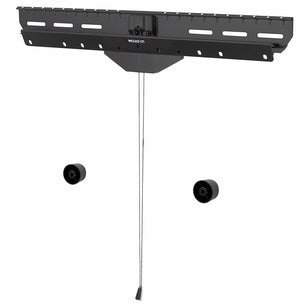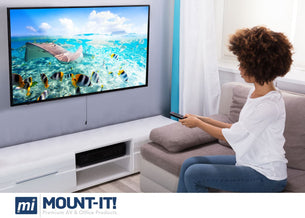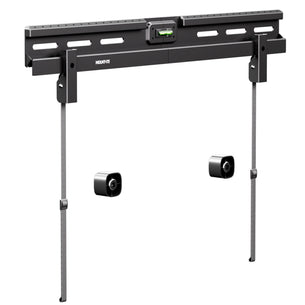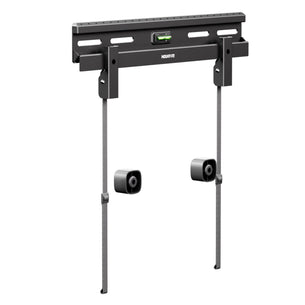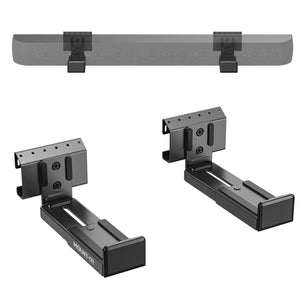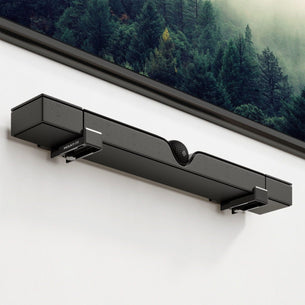As televisions have become slimmer and display quality has dramatically improved, wall mounting is more popular than ever. Mounting a TV can save significant space by eliminating bulky entertainment centers, creating a cleaner, more organized look with no visible wires. Learn how to hide TV wires to complete the setup.
However, this popular home improvement project comes with a common challenge: what if the wall has no studs? Don’t worry—you can still safely and securely install a TV mount on drywall without studs by using the right tools and techniques. This guide covers everything you need to know.
Why Drywall Without Studs Isn’t a Dealbreaker

Most TV mounts are designed for drywall installations with studs. Studs are vertical wooden beams inside your wall that act as strong anchor points. But when studs aren’t available, mounting directly to drywall with proper anchors allows you to safely distribute the weight of your TV.
Drywall by itself is not strong enough to hold a mount and a TV without support. That’s why using purpose-built anchors is essential—they create a stable hold by gripping or bracing against the backside of the drywall.
Best Mounting Hardware for Drywall Without Studs

1. Toggle Bolts
These traditional anchors have spring-loaded wings that open behind the wall. Once the screw is tightened, the wings clamp onto the drywall, spreading the weight and preventing pullout. Great for medium to heavy TVs.
2. Snaptoggles
Snaptoggle anchors feature a metal channel and plastic straps. The channel locks behind the drywall while the straps remain flush with the wall, making installation easier and very secure. Ideal for heavy TVs or full-motion mounts.
3. Molly Bolts
Once tightened, these anchors expand behind the drywall, much like toggle bolts. They're reliable for medium to heavy loads and allow you to remove and reinsert screws. Non-pointed mollys are better for plaster walls.
4. Elephant Anchors
These self-drilling plastic anchors expand when the screw is driven in. While not as strong as toggle bolts or Snaptoggles, they’re a quick solution for smaller, lightweight TVs using fixed mounts.
Anchor Load Capacity Overview:
| Anchor Type | Load Capacity | Best For |
|---|---|---|
| Toggle Bolts | 50 – 100+ lbs | Heavy TVs, tilt mounts |
| Snaptoggles | 80 – 200+ lbs | Full-motion mounts and large screens |
| Molly Bolts | 25 – 50+ lbs | Medium TVs |
| Elephant Anchors | 30 – 75 lbs | Small, lightweight TVs |
Use a Mounting Plate for Extra Support
A mounting plate or cleat made of metal or plywood helps by distributing the load over a wider surface. You attach the plate to the wall using any of the anchors above, then mount the TV bracket to the plate. This technique is particularly useful for heavier mounts and TVs.
To maintain a clean look, cut the plate slightly smaller than the TV so it remains hidden behind the screen. You can also paint or stain the wood to match the wall for added visual polish.
Can You Use a Ceiling Mount?
Yes. Nearly all ceilings have beams or joists, which act like studs. You’ll need longer screws and careful placement, but ceiling mounts are viable in homes where walls aren’t ideal. Just ensure your joist spacing works for your mount type.
Step-by-Step: How to Install a No-Stud Wall Mount
Tools You’ll Need:
- Pencil or masking tape
- Tape measure
- Level
- Hammer or drill
- Screwdriver
- No Stud TV Wall Mount
- Included hardware (screws, spacers, etc.)
Installation Instructions:
- Choose the wall location and mark with tape or pencil.
- Hold the mount in place and nail in one end to anchor it.
- Level the mount and nail the other side. Start from the ends.
- Hammer in remaining nails (use more force as needed).
- Fasten the VESA bracket to the back of your TV.
- Attach spacers for tilt if needed.
- Pull the cord to unlatch the spring lock.
- Hang the TV and pull the cord again to re-lock it.
Need more guidance? Visit our TV mount installation page.
What to Keep in Mind When Mounting a TV on Drywall
1. Know Your TV’s Weight
Most 32-inch TVs weigh around 25–30 lbs, but larger models can weigh significantly more. Always confirm the weight and check anchor limits.
2. Assess Wall Condition
Old, cracked, or weak drywall may not support even the best anchors. Avoid mounting in damaged areas.
3. Choose the Correct Mount
TVs follow the VESA standard, but make sure the mount supports your TV’s size and weight. For help choosing, read our guide: How to Choose a TV Wall Mount.
4. Avoid Full-Motion Mounts (Unless Reinforced)
Full-motion mounts exert far more force than fixed or tilting mounts. If you use one, reinforce with a mounting plate and high-capacity anchors.
5. Pick the Best Position
Select a wall with easy access to power outlets and center the screen at eye level. Use tape to visualize placement before committing. Mark your position with masking tape once finalized.
Can You Mount a TV Without Making Holes?
It’s possible—but only for small, lightweight TVs. Heavy-duty adhesive strips or hooks can work for screens under 20 lbs. However, these are not recommended for most modern TVs. A proper wall mount is safer and more secure.
Common Mistakes to Avoid
- Using the wrong anchors: Never use small plastic anchors meant for frames.
- Skipping level checks: A crooked mount causes strain and looks bad.
- Mounting on damaged walls: Always inspect drywall integrity first.
- Underestimating the combined weight: Factor in the mount and accessories.
Mounting a TV without wall studs is entirely achievable when using the proper anchors, techniques, and planning. Whether you choose toggle bolts, Snaptoggles, or a no-stud mount, you can enjoy a safe, space-saving setup even in older homes, rentals, or apartments.
→ Shop No-Stud TV Wall Mount
→ Browse All TV Mounts
→ Learn How to Hide TV Wires


